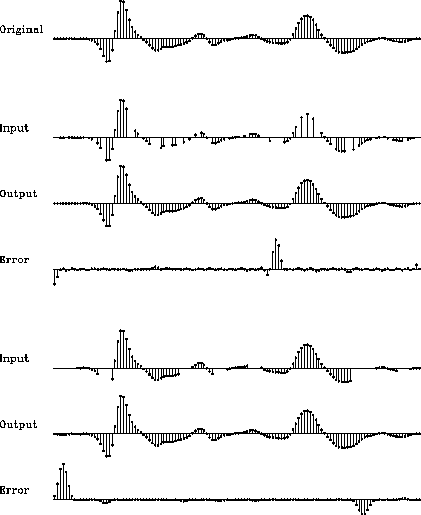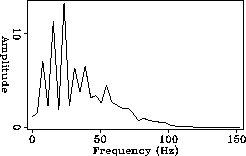 |
Figure 2 Two examples of interpolating irregularly sampled data. The top trace shows a segment of seismic data. The three traces in the middle show data before and after interpolation, and interpolation error, which is magnified by a factor of 500. The three traces at the bottom show another example in which the missing samples are clustered. The error in this second example is magnified by a factor of 40.
![[*]](http://sepwww.stanford.edu/latex2html/cross_ref_motif.gif) shows two examples of interpolating the randomly sub-sampled
signal. Both examples have 32% randomly missing samples, but the distributions
of the missing samples are different. The distribution of
the missing samples in the first example is close to uniform,
while the missing samples in the second example are clustered
into a few groups. From Figure
shows two examples of interpolating the randomly sub-sampled
signal. Both examples have 32% randomly missing samples, but the distributions
of the missing samples are different. The distribution of
the missing samples in the first example is close to uniform,
while the missing samples in the second example are clustered
into a few groups. From Figure 